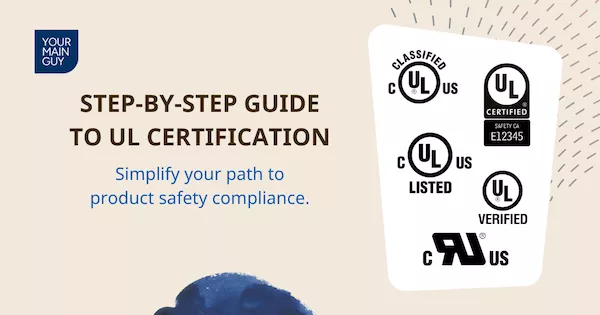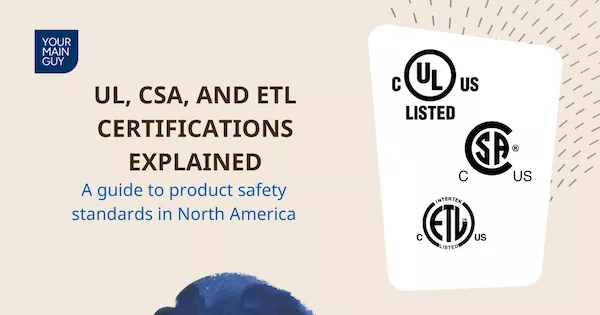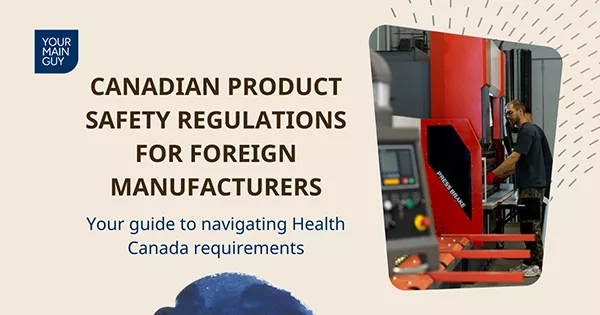Sustainability and Product Safety: The Growing Intersection in North American Markets
Explore how safety and sustainability standards are converging in North American markets. Learn about integrated certifications, consumer trends, and why 82% pay more for sustainable packaging.
How Are Sustainability and Safety Becoming Inseparable in Today's Market?
The North American marketplace is witnessing a remarkable transformation as two historically distinct concerns – product safety and environmental sustainability – increasingly converge into a unified framework for product development and consumer protection. This intersection represents more than a passing trend; it's becoming a fundamental shift in how businesses approach product design, manufacturing, and marketing.
Consumer research demonstrates a strong commitment to sustainable packaging, with 82% of consumers willing to pay more for products with sustainable packaging—representing an increase of four points from 2022 and eight points from 2021. This willingness persists despite significant price increases due to global inflation, signalling that environmental concerns remain a consumer priority even during economic uncertainty. Among younger consumers aged 18-24, environmental commitment is even stronger, with 90% willing to pay a premium for sustainable packaging.
Additionally, 71% of consumers have chosen a product in the last six months based on its sustainability credentials, demonstrating that this convergence of safety and sustainability is actively reshaping purchasing decisions and influencing everything from raw material selection to end-of-life product management.
What's Driving the Integration of Safety and Sustainability Standards?
The integration of safety and sustainability standards is being driven by a complex interplay of factors that extend beyond simple consumer preference. At the forefront is a growing understanding that environmental hazards often correlate with human health risks. This realization has prompted a more holistic approach to product assessment.
Consumer awareness has reached unprecedented levels, powered by digital access to information and social media's amplification of environmental and safety concerns. Today's consumers don't just want products that are safe for their families; they demand products that are safe for the planet.
Regulatory pressures have also played a crucial role. The Canadian Environmental Protection Act and the U.S. EPA's increased focus on chemical safety have created a regulatory environment where environmental and safety compliance often overlap. States like California have gone further, with regulations like Proposition 65 requiring disclosure of both health and environmental hazards.
Corporate initiatives have evolved in response, with many companies adopting integrated safety and sustainability frameworks. Supply chain considerations have become particularly critical, as companies realize that environmental risks often correlate with safety risks in their supply chains.
How Are Traditional Safety Standards Evolving to Include Sustainability Metrics?
The evolution of safety standards to incorporate sustainability metrics represents one of the most significant shifts in product certification history. Traditional safety testing protocols, which once focused solely on immediate human health impacts, now routinely include environmental impact assessments.
Consider the transformation in the construction materials industry. Traditional safety standards for building materials focused on fire resistance and structural integrity. Today's standards also evaluate:
- VOC emissions and indoor air quality
- Environmental persistence of flame retardants
- Recyclability and biodegradability
- Carbon footprint during manufacturing
- Water usage in production processes
The consumer goods sector provides another compelling example. Safety testing for children's toys now commonly includes assessments of:
- Chemical leaching potential
- Environmental degradation of materials
- Sustainability of packaging
- End-of-life disposal impacts
- Renewable material content
These changes reflect a growing understanding that long-term safety cannot be separated from environmental impact. A product that's safe for immediate use but harmful to the environment ultimately poses risks to human health through environmental degradation.
Which Certifications Bridge the Gap Between Safety and Sustainability?
The certification landscape has evolved to reflect this integrated approach to safety and sustainability. Several key certification programs have emerged as leaders in bridging this gap:
Energy Star
Energy Star certification now goes beyond energy efficiency to include:
- Product longevity requirements
- Material safety standards
- Emission limits
- End-of-life management considerations
UL ECOLOGO
This comprehensive certification program evaluates:
- Environmental impact
- Human health safety
- Product performance
- Social responsibility aspects
OEKO-TEX
Particularly relevant for textiles, OEKO-TEX certification covers:
- Chemical safety
- Environmental impact
- Social responsibility
- Resource efficiency
LEED Certification
While primarily known as a sustainability certification, LEED has incorporated significant safety components; however it only applies to building not products directly:
- Indoor environmental quality requirements
- Material safety assessments
- Occupant health considerations
- Chemical exposure limitations
The cost-benefit analysis for manufacturers pursuing these certifications is increasingly favorable. Companies report an average 15-20% premium on certified products, with certification costs typically recovered within 12-18 months through increased sales and market access.
What Can We Learn from Leading Companies' Approaches?
Leading companies have developed sophisticated approaches to integrating safety and sustainability, offering valuable lessons for others in the market. Here are some notable examples:
The Case Study of Patagonia
Patagonia's approach to outdoor wear demonstrates how safety and sustainability can be mutually reinforcing:
- Chemical safety protocols that prioritize both human and environmental health
- Durability testing that reduces environmental impact through longer product life
- Material selection that considers both safety and environmental impact
- Supply chain transparency that addresses both safety and sustainability concerns
The Case Study of Interface
Interface's flooring solutions showcase successful integration through:
- Zero-toxic emission manufacturing processes
- Cradle-to-cradle design principles
- Integrated safety and environmental testing protocols
- Innovative recycling programs
The Implementation challenges typically include:
- Initial cost increases
- Supply chain complexity
- Testing protocol development
- Certification management
However, companies report strong ROI through:
- Premium pricing opportunities
- Increased market share
- Enhanced brand value
- Reduced regulatory risks
How Is Technology Enabling Better Safety-Sustainability Integration?
Technological advancement has become a crucial enabler of integrated safety and sustainability approaches. Key technologies include:
Digital Tracking and Reporting
- Blockchain-based supply chain tracking
- Real-time environmental impact monitoring
- Integrated safety and sustainability dashboards
- AI-powered risk assessment tools
Life Cycle Assessment Technologies
- Advanced material testing capabilities
- Predictive modelling for environmental impact
- Automated compliance monitoring
- Integration of safety and environmental data
Emerging Technologies
- AI-driven product development
- IoT-enabled monitoring systems
- Advanced materials testing
- Automated certification processes
These technologies are making it easier and more cost-effective for companies to maintain high standards in both safety and sustainability.
What's Next for Safety and Sustainability Integration?
The future of safety and sustainability integration looks promising, with several key trends emerging:
Regulatory Evolution
- Increased harmonization of safety and environmental standards
- Stricter requirements for integrated certification
- Enhanced supply chain transparency requirements
- Global standard alignment
Market Developments
- Growing premium for certified products
- Increased consumer sophistication
- Enhanced supply chain integration
- New certification frameworks
Our Recommendations for Businesses
- Invest in integrated testing and certification programs
- Develop comprehensive supply chain monitoring
- Implement advanced tracking technologies
- Train staff in both safety and sustainability assessment
- Engage with certification bodies early in product development
The integration of safety and sustainability is no longer optional for businesses seeking long-term success in North American markets. Companies that embrace this integration early will find themselves better positioned to meet evolving consumer demands and regulatory requirements.
As we move forward, the distinction between safety and sustainability will continue to blur, creating a new paradigm where products must be safe for both people and the planet. This evolution represents not just a challenge but an opportunity for companies to innovate and create superior products that meet the demands of an increasingly conscious marketplace.




